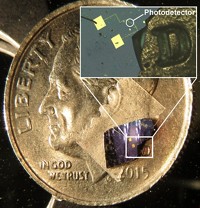Advertisement
Grab your lab coat. Let's get started
Welcome!
Welcome!
Create an account below to get 6 C&EN articles per month, receive newsletters and more - all free.
It seems this is your first time logging in online. Please enter the following information to continue.
As an ACS member you automatically get access to this site. All we need is few more details to create your reading experience.
Not you? Sign in with a different account.
Not you? Sign in with a different account.
ERROR 1
ERROR 1
ERROR 2
ERROR 2
ERROR 2
ERROR 2
ERROR 2
Password and Confirm password must match.
If you have an ACS member number, please enter it here so we can link this account to your membership. (optional)
ERROR 2
ACS values your privacy. By submitting your information, you are gaining access to C&EN and subscribing to our weekly newsletter. We use the information you provide to make your reading experience better, and we will never sell your data to third party members.
Materials
Perovskite Nanowires Win Laser Battle
Semiconducting Materials: Chemists synthesize single crystals with ‘unheard of’ performance
by Matt Davenport
April 20, 2015
| A version of this story appeared in
Volume 93, Issue 16
Lead halide perovskites are already famous for their ability to harvest solar energy, and now researchers are starting to show that the semiconductors make for promising lasers. Last year, British researchers demonstrated that lasers made with perovskite thin films and powered by light had a quantum efficiency of about 70%, meaning a laser emitted seven photons for every 10 absorbed. Chemists led by Song Jin of the University of Wisconsin, Madison, and Xiaoyang Zhu of Columbia University say they have now pushed that efficiency to nearly 100% using perovskite nanowires (Nat. Mater. 2015, DOI: 10.1038/nmat4271). The team grew the wires by first depositing a film of lead acetate on a glass substrate and submerging the film in a concentrated methylammonium halide solution. Lead slowly dissolved in the solution, allowing single-crystal lead halide perovskite nanowires to grow. Each nanowire’s high crystalline quality contributes to its quantum efficiency, which Zhu says is so high it’s “unheard of” in other semiconductor materials. The researchers are now working to power their lasers with electricity rather than light, which could pave the way to miniaturized optoelectronic devices.




Join the conversation
Contact the reporter
Submit a Letter to the Editor for publication
Engage with us on Twitter